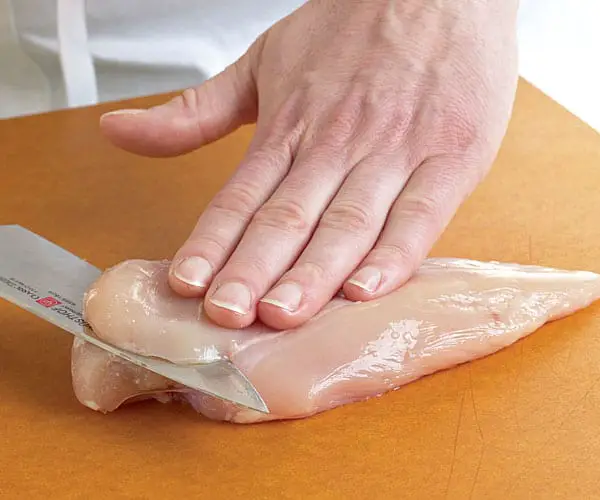When it comes to chicken breasts, there is quite a bit of variation in the weight each one holds. On average, boneless chicken breasts weigh about 5 ounces (141 grams) but can range from 3 ounces (85 grams) to 8 ounces (225 grams). This difference in weight is attributed to factors such as the size and age of the chicken and how much fat is present within each breast.
The amount of meat within each boneless chicken breast will also affect its weight. Most grocery stores offer two types of boneless chicken breasts: those with the skin on and those without the skin on. Since the skin contains fat, it adds more weight to an individual breast than if removed beforehand. Therefore, a boneless chicken breast with its skin still intact will typically weigh more than an identical-sized piece that has had its skin removed before being weighed.

Another factor that affects a boneless chicken breast is its age. As chickens age, their bodies produce less meat per pound than those of younger birds. Therefore, if the store purchases older chickens ready for processing, their boneless breasts may be lighter than those of more immature birds. For best results when cooking with boneless chicken breasts, opt for ones processed from young chickens, as they tend to have more tender meat and better flavor than their older counterparts.
Finally, even though boneless chicken breasts are almost always sold uncooked, some grocery stores also offer pre-cooked options. However, these pre-cooked products can be significantly heavier due to added water weight after being cooked before being weighed and packaged for sale. When selecting pre-cooked products such as these, consider this so you can buy the correct quantity needed for your recipe or meal plan.
How Much Does a Boneless Chicken Breast Weigh?
Boneless chicken breasts weigh from 3 oz (85 grams) to 8 oz (225 grams). Average boneless chicken breasts weigh 5 oz (141 grams).
Breast sizes of chicken vary from one package to another. Each pack should mention the overall weight. The collection is generally more than a pound because the prices are per pound. You can estimate if, for some reason, you do not have the packaging or labels. Perhaps you’ve thrown it, but you want to know how much chicken you purchased. You can generally estimate that two chicken breasts will be approximately a pound, depending on the size of the chicken breast. Two eight-ounce chicken breasts would weigh 1 pound. The chicken breast eight-ounce is quite extensive.
A raw artificial chicken breast of 4 ounces is roughly the size of a card deck. An 8 – 10 ounce chicken breast resembles the most significant iPhone. You would need 4 of these to equal one pound 16 ounces in a pound.
A carton of poultry breasts often offers gram weight measurement. One pound is 450 grams, so use the card comparison deck again. Approximately one hundred grams are equivalent to the size of the card deck. If the packet uses kilograms or KG, it’s more of a pound, as 1 kilogram is around 2.2 pounds. The best way to achieve this is to find a package weighing nearly 1 pound.
Each box varies in weight; therefore, select a few packages to shut one. Using a kitchen scale is the most accurate approach to the weight of every chicken breast.
Today’s Today’s are significantly more significant than 40 years ago. Selective breeding and improved nutrition are the reasons behind this. This indicates that the breasts of the chicken are also considerably more prominent and may grow. Chickens have no breasts. The bosom is a pectoral muscle. On either side of the chicken breast, strength emerges. This seemingly natural division is then cut where it happens. That’s wThat’sy’re they’re-breast halves occasionally.
In conclusion, when buying and cooking boneless chicken breasts, several factors come into play when determining how much each one weighs individually. The average weight of a single boneless breast is approximately 5 ounces (141 grams), but this can range anywhere from 3 ounces (85 grams) up to 8 ounces (225 grams), depending on factors such as the age of the bird and whether or not its skin has been removed before weighing it out at the store. With all this in mind, you should now feel confident in making decisions related to purchasing and cooking with boneless chicken breasts!
- How Many Tablespoons is One Clove of Garlic? - June 26, 2024
- How to Measure 3/4 Cup When You Don’t Have the Right Measuring Cup? - June 6, 2024
- How Much Does Cooked Pasta Weight Compare To Dry? - April 30, 2024
